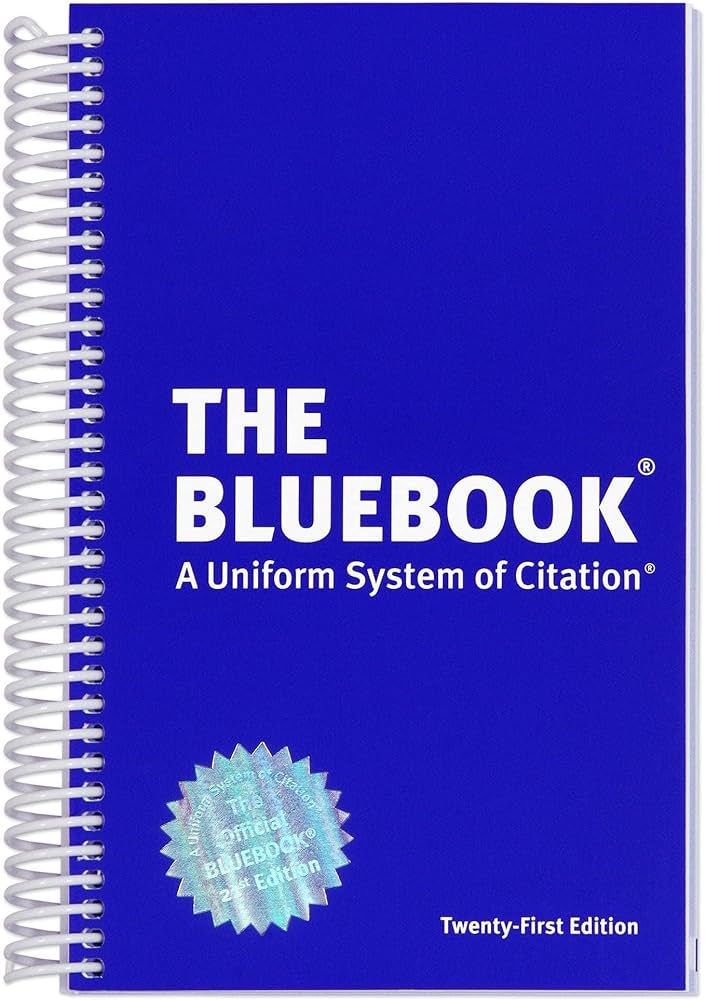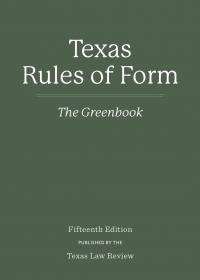Formatting a brief for a Texas court
Filing a compliant, well-formatted brief demonstrates your professionalism, establishes credibility with the court, and ensures that your brief won’t be rejected for technical errors—such as not adhering to specifications around margins, font size and type, citation format, and other formatting details.
That’s why it’s essential for lawyers practicing in Texas (and any other state) to familiarize themselves with the specific rules and preferences of the court where they’re filing to ensure compliance with local requirements.
However, knowing which guidelines to follow isn’t always clear-cut.
What is the Texas Law Review Manual on Usage & Style (the MoUS)?
For an overall legal writing guide, lawyers practicing in Texas typically rely on The Texas Law Review Manual on Usage & Style, commonly known as the MoUS, a pocket-sized guide published by The University of Texas at Austin, Texas Law Review.
As Texas Law notes on its e-commerce site, the MoUS “answers questions that commonly arise while in the throes of legal writing” and “contains rules on topics including punctuation, capitalization, numbers and symbols, italicization, grammar, word choice, quotations, composition, and editing.”1

What is the Texas Greenbook?
When it comes to properly formatting citations, legal professionals in Texas should turn to the Texas Rules of Form, known as The Greenbook, and The Bluebook: A Uniform System of Citation. These two different citation and formatting guides have a lot in common, but serve somewhat distinct purposes.
The Bluebook: A Uniform System of Citation
First published just over 100 years ago, The Bluebook is considered the standard citation guide for legal documents in most jurisdictions across the United States, including in Texas.
The Bluebook covers a wide range of legal citation rules, including citation formats for cases, statutes, regulations, law review articles, and other legal materials. It’s commonly used in law schools, law firms, and courts throughout the United States.

Texas Rules of Form: The Greenbook
The Texas Greenbook is a citation guide specific to Texas legal practice. Published by the Texas Law Review, The Greenbook provides citation and formatting guidelines tailored to the specific practices and preferences of Texas laws and courts.
As explained in-depth in this comprehensive history, The Greenbook was first published in 1966 to address idiosyncrasies in Texas law and legal practice that were causing confusion because they were not being adequately addressed by the Bluebook.
Note that the Greenbook is meant to supplement The Bluebook, not replace it. Where the rules conflict, attorneys should follow The Greenbook when citing Texas authorities.

The Greenbook vs. The Bluebook
While there are many similarities between The Bluebook and The Greenbook in terms of the types of legal materials covered and general citation principles, there are some key differences that reflect the unique legal landscape and preferences in Texas.
The Tarlton Law Library at The University of Texas at Austin compiled the below helpful list of some differences between The Greenbook and The Bluebook.2
Under Chapter 4 (Court of Appeals), a full citation in Texas should include:
- The volume and page of the South Western Reporter
- A parenthetical notation of the court that decided the case, an em dash (—) followed by the cite of the court
- The date
- The writ history or petition history
- Any subsequent history
- Interlocutory orders, if appropriate
For example, proper Texas Greenbook citation format:
Birnbaum v. All. of Am. Insurers, 994 S.W.2d 766 (Tex. App.—Austin 1999, pet. denied).
Walls Reg’l Hosp. v. Altaras, 903 S.W.2d 36 (Tex. App.—Waco 1994, orig. proceeding).
Under Chapter 6 (Mandamus and Other Original Proceedings):
- You should cite mandamus cases and other original proceedings in the Texas Supreme Court in the same manner as other Texas Supreme Court cases
- However, you should also include “orig. proceeding” in a separate parenthetical after the date parenthetical
Under Chapter 7 (Trial Courts), citation to trial court cases must include:
- Case name
- Cause number
- A parenthetical indicating the court, county, and exact date
Under Chapter 10 (Texas Statutes):
- The Greenbook requires citations to the Texas code to include “West” in the parenthetical before the date to note the publisher of the official Texas code. (The Greenbook previously required “Vernon’s” instead of “West,” but the most recent edition brings the citation in line with the Bluebook.)
- There are two independent codes in Vernon’s Annotated Revised Civil Statutes of the State of Texas that are still not entirely superseded by the Texas code: the Texas Code of Criminal Procedure and the Texas Probate Code
- To cite session laws, you should include the:
- Name of the statute
- Legislature and session of enactment
- Chapter and session number of the statute
- Publication
- Future location in the code
- The Greenbook allows citation to electronic databases if a print version is not available or if including a parallel citation provides direction or clarification
- If you cite to an electronic database, you must include in the parenthetical the name of the database provider and the date through which it is current
- You may not cite to the Texas Legislative Council’s electronic database of Texas statutes
Under Chapter 14 (Legislative History):
- 14.1.1: Unenacted bills are cited by: the bill number, legislature number, session, and year. Include “R.S.” for a regular session of the legislature or “C.S.” for a called session
- 14.2: House and Senate Journals citations should include the chamber, legislature, number, session, page, and year
Under Chapter 18 (Books):
- 18.1: If you cite a book that is frequently cited in Texas (like a Dorsaneo practice guide), you should include:
- Volume, if more than one
- Author
- Title
- Page or section number
- Edition, if more than one
- Date of publication
Use technology to meet Texas local rules of court
While certain statewide rules and standards apply when bringing a case before a Texas court, such as Texas Rules of Civil Procedure, Texas Rules of Appellate Procedure and Texas Disciplinary Rules of Professional Conduct, specific local rules of court can vary, depending on the jurisdiction and the specific court.
Lawyers should regularly check the website of the specific court where they are filing for updates to local Texas court rules, forms, and procedures, and be sure they are using the most up-to-date version of The Greenbook (15th edition, as of May 2024) when preparing a brief.
By following all local rules and procedures and properly formatting your brief according to The Greenbook and Bluebook, you can put your best foot forward with the Texas courts to deliver a positive outcome for your client.
Instead of studying The Greenbook from cover to cover, to save time, improve accuracy, and ensure compliance with all local rules, consider using a trusted automated brief formatting platform, such as TypeLaw, the next time you’re preparing a brief for a Texas court.
- Manual on Usage and Style (MoUS) e-commerce page, Texas Law, 2022. ↩︎
- Bluebook Legal Citation: A guide to legal citation using Bluebook rules, Tarlton Law Library, University of Texas at Austin, Sept. 6, 2023. ↩︎